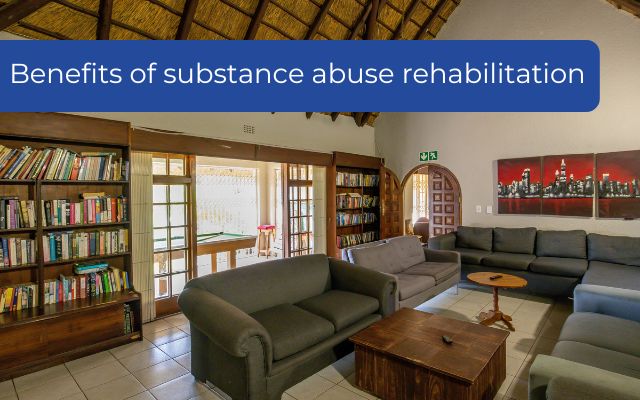The Best Guide To Narconon Africa
The Best Guide To Narconon Africa
Blog Article
Some Known Factual Statements About Narconon Africa
Table of ContentsThe Definitive Guide for Narconon AfricaThe Buzz on Narconon AfricaThe Best Strategy To Use For Narconon AfricaNarconon Africa Fundamentals ExplainedSome Known Incorrect Statements About Narconon Africa Getting The Narconon Africa To WorkHow Narconon Africa can Save You Time, Stress, and Money.
In a series of documents with Manudeep Bhuller and Katrine V. Lken, we get rid of these data challenges and the nonrandomness of imprisonment, using new insights right into exactly how incarceration influences recidivism, work, kids, and criminal networks - Drug rehabilitation technology. Number 1 Our job studies the impacts of imprisonment in Norway, a setting with 2 vital advantagesWe can even more link this information to other family members, including kids and siblings. We have details on co-offending that permits us to map out criminal networks for observed criminal offenses. Second, we can take advantage of the random project of criminal situations to judges who vary in their propensities to send out accuseds to prison.
But some courts send out accuseds to prison at a high price, while others are much more lenient. We gauge a court's stringency as the typical imprisonment price for all various other instances a court takes care of, after regulating for court and year fixed impacts, which is the level of arbitrary task. This quasi-random task of judge stringency can be used as a tool for incarceration, as it highly anticipates the judge's choice in the existing situation, but is uncorrelated with other instance attributes both deliberately and empirically.
9 Easy Facts About Narconon Africa Described
Characteristics of prisoners, consisting of demographics and crime classifications, are generally similar in Norway and various other nations, including the United States, with the exceptions that the US murder rate is much greater, and race plays a bigger role there also. What stands apart as various, specifically contrasted with the USA, is the jail system.
Figure 2In Norway, the typical time spent in jail is a little over six months, which resembles most various other Western European nations. This contrasts with ordinary US jail time of nearly 3 years, which remains in huge component the factor the USA is an outlier in its incarceration rate compared to the remainder of the globe [Number 1]
Get This Report on Narconon Africa
This gives far more separation between small and solidified crooks than exists in the United States. There is no overcrowding in Norwegian jails and much better personal security, with each detainee being appointed to their own cell and a greater inmate-to-staff ratio than in the USA (http://www.video-bookmark.com/bookmark/6260358/narconon-africa/). Jails in Norway also provide well-funded education, medication therapy, psychological wellness, and job training programs
Our research study on the impacts of incarceration on the wrongdoer, making use of the arbitrary job of courts as a tool, yields three essential findings. Imprisonment discourages better criminal actions. We find that incarceration reduces the likelihood that an individual will reoffend within five years by 27 percent factors and minimizes the equivalent variety of criminal costs per person by 10 fees.
7 Easy Facts About Narconon Africa Shown
We find substantial reductions in reoffending possibilities and cumulative charged crimes even after offenders are released from jail. Our second outcome is that bias because of selection on unobservable specific qualities, if ignored, causes the erroneous final thought that time invested behind bars is criminogenic. If we just contrast criminal defendants sentenced versus those not imprisoned, we discover favorable associations in between incarceration and subsequent criminal activity.
This stands in contrast to our evaluation based upon the arbitrary assignment of courts, which finds an opposite-signed result. Third, the reduction in criminal activity is driven by individuals that were not functioning before incarceration. Among these individuals, imprisonment increases engagement in programs routed at enhancing employability and minimizing relapse, and this eventually raises work and incomes while inhibiting criminal behavior.

Jail time triggers a 34 portion point rise in involvement in job training programs for the previously nonemployed, and within five years their employment rate boosts by 40 portion points. At the same time, the probability of reoffending within five years is reduced by 46 percentage points, and there is a decrease of 22 in the average number of criminal fees.
Little Known Facts About Narconon Africa.

A possible description for the distinction is that Norway's jail system differs considerably, both in regards to prison-term length and jail problems, from the US jail system. While understanding the impacts of incarceration on the transgressor is a vital initial step, catching spillover effects is additionally crucial for examining criminal justice plan and creating effective jail systems.
The smart Trick of Narconon Africa That Nobody is Discussing

Normal the very least squares estimates reveal that kids of incarcerated papas are 1 percentage point more probable to be billed with a crime, family member to a mean of 13 percent, and reveal no result on college grades. Using our judge stringency instrument, we discover no statistical evidence that a daddy's imprisonment influences a youngster's own crime or institution qualities, yet we are unable to dismiss modest-sized results.
The Single Strategy To Use For Narconon Africa
We specify criminal groups based on network web links to previous criminal instances. Our evaluation yields three main findings. Initially, when a criminal network participant is put behind bars, their peers' chance of being billed with a future criminal activity decreases by 51 percent points over the next 4 years. Also, having an older bro jailed minimizes the chance his more youthful bro will certainly be charged with a criminal activity by 32 percentage points over the following four years.
Report this page